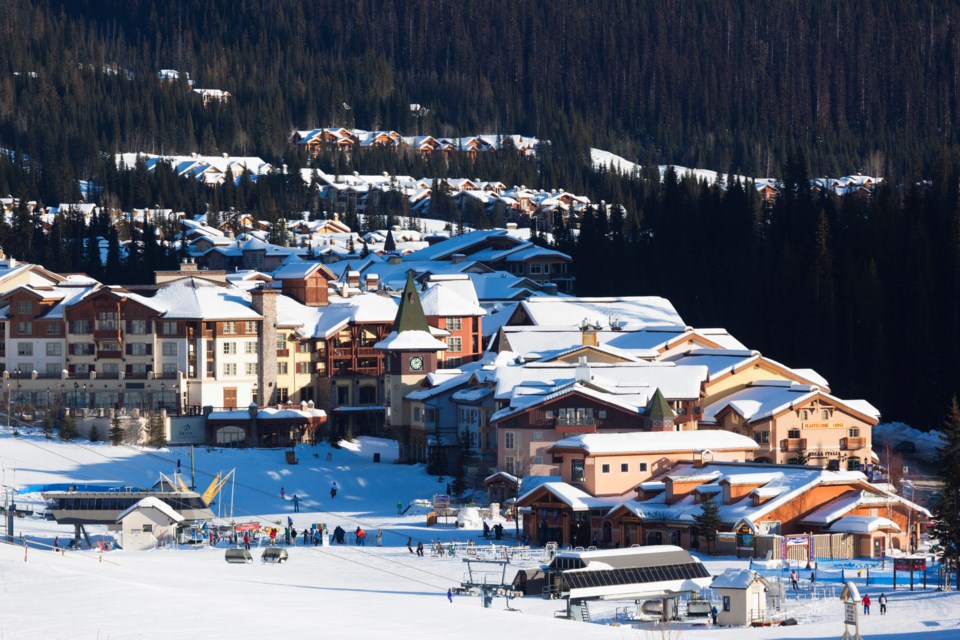Over Christmas and more recently, during some time off in February, I got a chance to head back to my old stomping grounds in the Interior and take some time to experience the ski hills I grew up learning on with some of my family.
From the tiny Harper Mountain, with its family-run ski hill and fantastic hearth-warmed lodge (and one of my favourite spots in the province), to the second-largest ski resort in Canada: Sun Peaks. With barely any lines and fantastic, dry fluffy powder, I began to miss my hometown ski hills.
Coming back to Sun Peaks for the first time in many years, I was astonished to see the amount of growth that had taken place in the little village since I left for the Kootenays and then Whistler. Numerous new townhomes and chalets had sprouted up at the old Burfield chairlift; the village centre bustled with new businesses; and the edges of town seemed to have moved further away as new chalets climbed out towards each end of the valley.
But Sun Peaks’ expansion shouldn’t have surprised me. It’s one thing to read news stories about the community’s rapid growth—seeing it in person was another experience entirely.
Between 2016 and 2021, the Mountain Resort Municipality of Sun Peaks grew at the fastest rate of any municipality in the province, its population rising from 616 people to more than 1,404 within five years—a 128-per-cent growth rate.
When I started skiing Sun Peaks in the early 2000s, it was a different kind of place entirely. Of course, the ski lifts were consistently popular with international tourists and locals coming from Kamloops, but the year-round permanent resident was more rare. That’s not the case anymore.
The town’s permanent population has grown so much that parents have had to turn the old ski school into a district-recognized day school, with plans to build a new school in the near future to deal with overcrowding.
I have mixed feelings about seeing all of this happen at my hometown ski hill. I imagine this is what the first generations of Whistler skiers felt like as their Tiny Town grew from a smattering of mid-mountain lifts, A-frame cabins and hippy shacks into an international ski tourist mecca.
In 40 years, Whistler went from a municipality with the same population Sun Peaks now has (1,369 people in 1980), to a “city in denial,” as Pique columnist Andrew Mitchell recently put it, with 14,000-plus permanent residents and a growth rate close to 20 per cent.
Given the expansion of Sun Peaks, and knowing what we do about Whistler’s surging population, I had to ask: is this the case across all of the province’s ski towns?
The short answer is, yes: Nearly every municipality in the province you can call a “ski town” is booming.
Between 2016 and 2021, Fernie grew by 17.1 per cent; Invermere by 15.5 per cent; Rossland by 11 per cent; Revelstoke by 9.4 per cent; Kimberly by 9.3 per cent; Golden by 7.5 per cent; and although it’s not an official municipality, Big White’s unincorporated area’s population surged by a massive margin—from 251 to 991 people, a 294.8-per-cent increase.
Many of these towns don’t entirely rely on their local ski resorts for economic and population growth. Other factors and industries will of course play a role in new developments, depending on where you are in the province. Still, the resorts in these areas play a significant role in employing people and driving considerable immigration and tourism to these towns.
People arrive from around the world to work and play in B.C.’s ski towns and, in many cases, come for the powder and stay for the rest of their lives. With new remote work capabilities, more and more people are turning their second homes into permanent residences, further compounding growth pressures.
As long as B.C.’s ski towns keep getting snow in the mountains (and maybe even long after that), people are going to want to move to them. My hometown ski hill might one day be the Whistler of the Interior. While that might be hard to imagine right now, as a child growing up, I never imagined it would have more than 1,000 people today.




